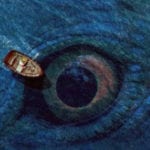 Movies and TV
Movies and TV  Movies and TV
Movies and TV  Health
Health 10 Miraculous Advances Toward Curing Incurable Diseases
 Miscellaneous
Miscellaneous 10 Undeniable Signs That People’s Views of Mushrooms Are Changing
 Animals
Animals 10 Strange Attempts to Smuggle Animals
 Travel
Travel 10 Natural Rock Formations That Will Make You Do a Double Take
 Movies and TV
Movies and TV 10 Actors Hidden in Your Favorite Movies
 Our World
Our World 10 Science Facts That Will Change How You Look at the World
 Pop Culture
Pop Culture 10 Incredible Female Comic Book Artists
 Crime
Crime 10 Terrifying Serial Killers from Centuries Ago
 Technology
Technology 10 Hilariously Over-Engineered Solutions to Simple Problems
 Movies and TV
Movies and TV 10 Movie Adaptions That Brought Popular Songs to Life
 Health
Health 10 Miraculous Advances Toward Curing Incurable Diseases
 Miscellaneous
Miscellaneous 10 Undeniable Signs That People’s Views of Mushrooms Are Changing
Who's Behind Listverse?

Jamie Frater
Head Editor
Jamie founded Listverse due to an insatiable desire to share fascinating, obscure, and bizarre facts. He has been a guest speaker on numerous national radio and television stations and is a five time published author.
More About Us Animals
Animals 10 Strange Attempts to Smuggle Animals
 Travel
Travel 10 Natural Rock Formations That Will Make You Do a Double Take
 Movies and TV
Movies and TV 10 Actors Hidden in Your Favorite Movies
 Our World
Our World 10 Science Facts That Will Change How You Look at the World
 Pop Culture
Pop Culture 10 Incredible Female Comic Book Artists
 Crime
Crime 10 Terrifying Serial Killers from Centuries Ago
 Technology
Technology 10 Hilariously Over-Engineered Solutions to Simple Problems
Top 10 Never-Before-Seen Photos Of Earth – 2020
Let us ask you a question… How many photos of the earth have you seen? By photos of the earth, we aren’t talking about photos taken from the upper atmosphere or the international Space Station. We mean photos taken from space or some other planet.
For most people, the answer would be one or two. One of those photos will probably be the famous Blue Marble, which was shot by Apollo 17 astronauts in 1972. However, the popular Blue Marble is just one of the few breathtaking photos of the earth out there. We have ten more here, the majority of which you’ve never seen before.
10 Amazing Things You Probably Don’t Know About The Space Race
10 Photo of the Earth from Saturn
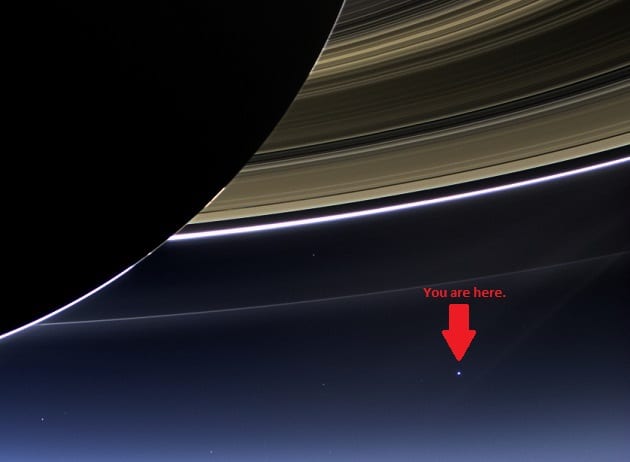
On 19 July 2019, NASA’s Cassini space probe shot a breathtaking photo of earth from Saturn. The photo shows part of Saturn and its rings up close with the Earth appearing as a small dot in the distance. The moon is beside the Earth but is barely visible. NASA named the photo “The Day the Earth Smiled”.
The Day the Earth Smiled is considered one of the best photos of earth. It turned out perfect because Saturn blocked the sun, which would have cast shadows on Cassini’s field of view and destroyed what would’ve been a perfect shot. Despite its popularity, this photo is just one of the many photos Cassini shot from Saturn.
In 2006, Cassini captured a photo of the Earth with parts of Saturn’s rings in the foreground. That photo is called the Blue Orb. It’s cool too but not as cool as this one. Cassini also took another photo of the Earth and moon on July 19, 2013. The moon is visible this time but Saturn’s rings are not.[1]
9 Farthest photo of Earth from space
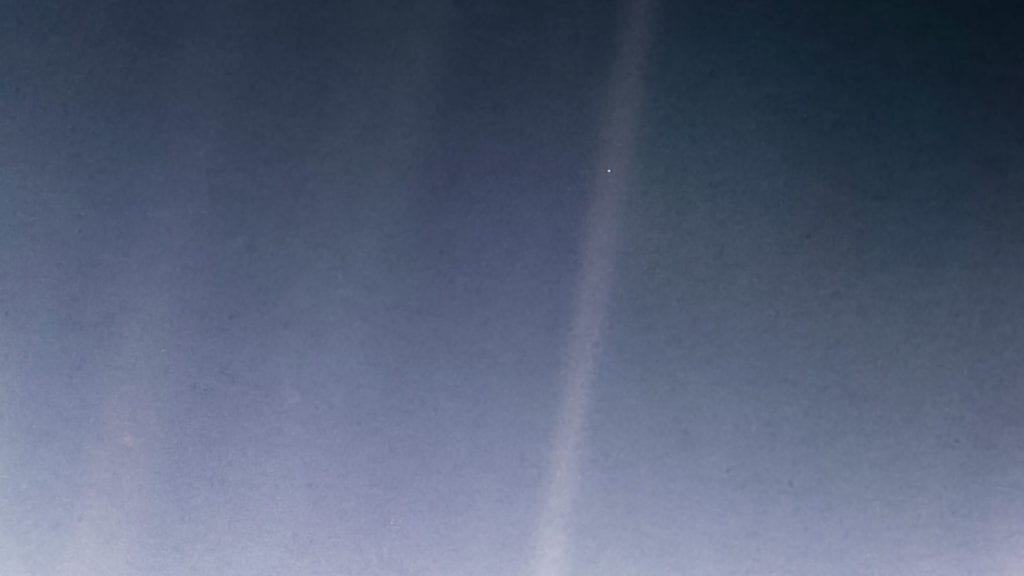
What’s the farthest photo ever taken of planet Earth? That’s the Pale Blue Dot, which was shot by NASA‘s Voyager 1 space probe on 14 February 1990. The photo shows the Earth as a very tiny dot in the upper half of a ray of sunlight that runs from the top to the bottom of the photo.
Voyager 1 was 3.7 billion miles away from Earth at the time it shot that photo. That’s beyond the orbit of every planet in our solar system including Pluto. To put that into perspective, the photo arrived Earth on 1 May 1990, two-and-a-half months after it was shot.
The Pale Blue Dot is one of 60 photographs Voyager 1 shot around the same time. The probe also took photos of Venus, Jupiter, Uranus and Neptune. It didn’t take a photo of Mercury because the light emitted by the planet was overwhelmed by the brighter light from the sun. Mars was blocked by sunlight and Pluto was too small, dark and distant to be captured.
Talking about Voyager 1, the space probe is now in an area called interstellar space. That’s the region where our Sun’s gravitational pull is almost non-existent. In one sentence, Voyager 1 is no longer in our solar system. We shouldn’t expect any more photos from it either since it turned its cameras off right after taking those photos.[2]
8 Photo of the Earth rising from the moon
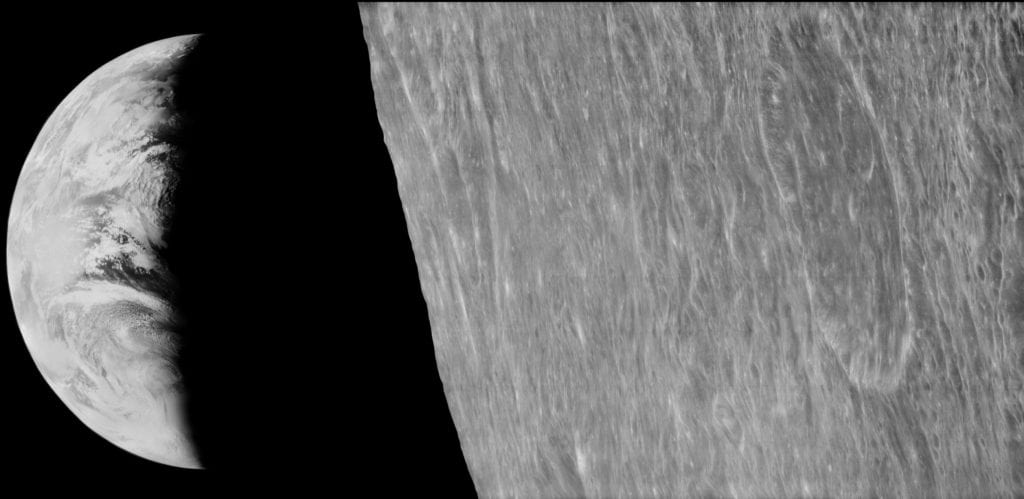
On Christmas Eve 1968, the three-man crew of Apollo 8 became the first humans to travel to the moon. They did not land on the moon but only orbited round it before returning to Earth. However, their flight would have a lasting effect, particularly on the founding of environmental activism.
Environmentalism wasn’t really a thing until Apollo 8 crewman, Astronaut William Anders shot a colored photograph of the Earth rising from the moon. The upper half of the Earth was bright blue while the lower half was pitch black, as if it were nonexistent. The dry, sunbaked surface of the moon is visible in the foreground.
That photo was named Earthrise even though it isn’t the first photo of the Earth rising from the moon.[3] That honor belongs to a similar photo shot two years earlier. The photographer wasn’t a human but the Lunar Orbiter 1, a space probe NASA deployed to study the moon.
The 1966 Earthrise photo looks like Ander’s Earthrise except that it was grainy and shot in black-and-white. Little wonder it didn’t have the same effect as Ander’s clearer and colored photo. On 13 November 2008, NASA released a high-resolution photo it created from the 1966 Earthrise. The updated photo looks better even though it still lacks color.[4]
7 Photo of a crescent-like Earth
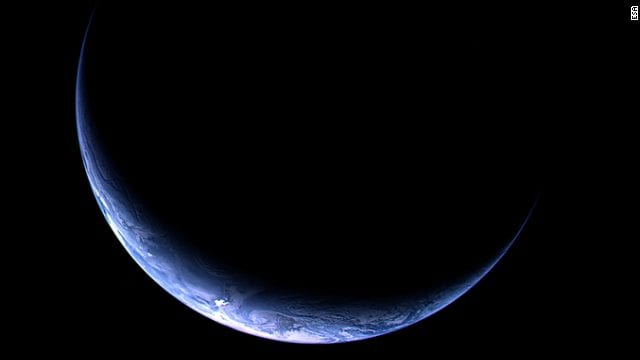
We all know what comets look like when viewed from Earth. Now, let’s turn that scenario around a bit. What does the Earth look like when viewed from a comet? We don’t really have an answer to that but we have an idea. The Earth may look like a crescent.
The beautiful photo you see up there was shot by the European Space Agency’s (ESA) Rosetta space probe in 2009. It isn’t an edited photo of the moon or some earth-like planet. It’s the Earth. The entire planet is completely blacked out save for the South Pole, which retains Earth’s distinctive blue color.
Rosetta was prepping to attempt a landing on Comet 67P/Churyumov-Gerasimenko at the time it took the photo. However, it first needed to make three flybys past Earth to generate enough velocity to intercept the comet. It took the photo during its third flyby.
6 First photo of the Earth
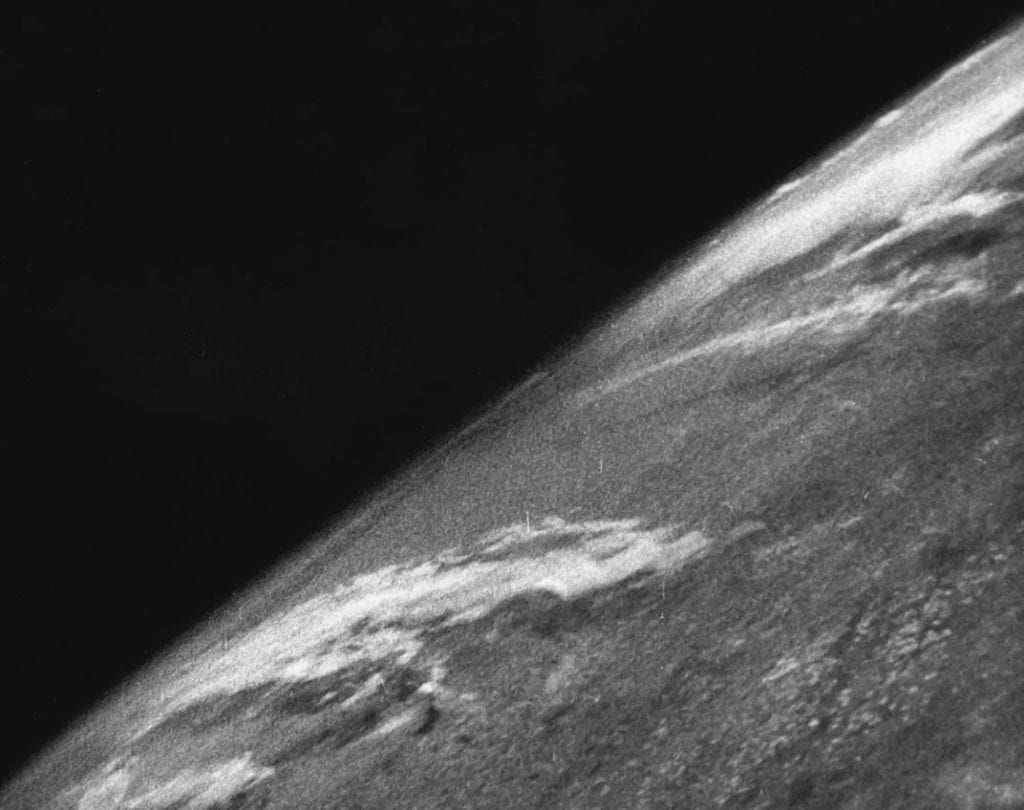
The first photo of the Earth was shot on 24 October 1946 and you wouldn’t believe what we used to shoot that photo. It wasn’t a space probe, satellite or astronauts in a spacecraft. It was a missile. A Nazi missile.
That missile was the infamous V-2 (Vengeance Weapon 2). The Nazis developed the missile during World War II and fired lots of it at their primary rival, the British. However, they still had many unused missiles lying around at the time they were defeated.
The US military transported those missiles to the White Sands Missile Range in New Mexico where some researchers attached a camera to one of them to capture the first photo of space. The photo was shot in black-and-white and shows a part of the Earth with some streaks of white clouds against the dark space.[5]
10 Joys And Terrors Of Space Exploration
5 First photo of the Earth and moon

On 22 December 1966, the NASA Applications Technology Satellite 1 (ATS-1) did what no human, satellite or space probe had ever done. It took a photograph of the Earth and moon together. In that photo, we can see part of the Earth in the foreground with the full moon in the background.
Many people including space enthusiasts have never seen this photo and some even credit the Voyager 1 orbiter with taking the first photo of the Earth and moon together. Voyager 1 took the first full photo of the Earth and moon and not the first photo of the Earth and moon.[6]
4 Photo of planets Earth and Venus from Mars
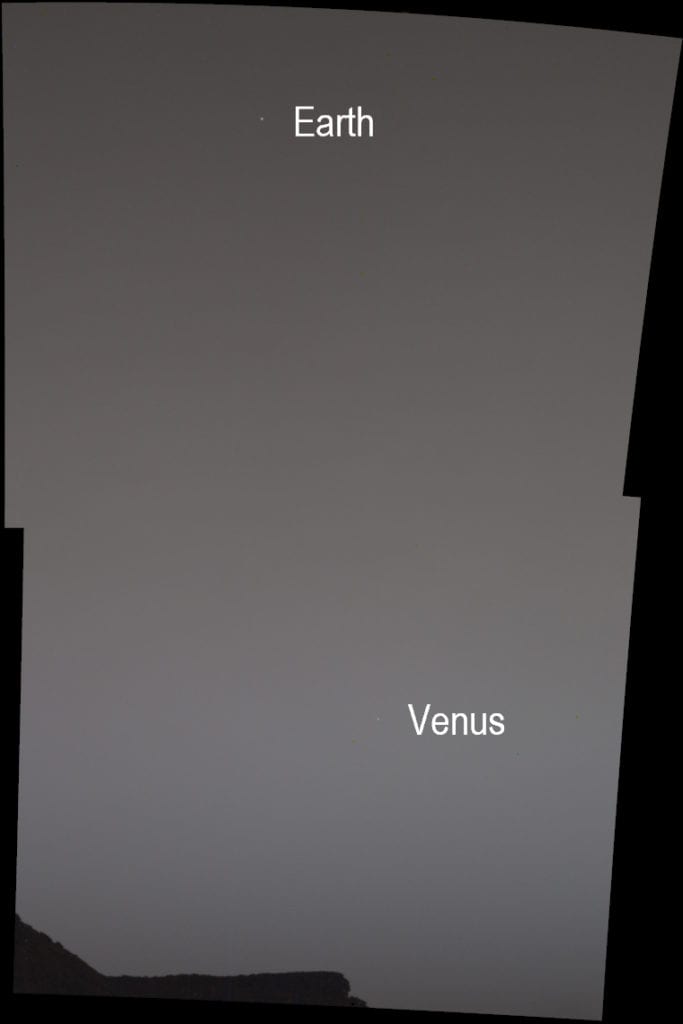
It’s not every time we get to see a photo of Earth from Mars. Thanks to the doggedness of the Mars Curiosity rover, which is still kicking six years past its planned two-year lifespan, we know what the Earth looks like from the surface of Mars.
In mid-2020, Curiosity pointed its camera at the Martian sky and shot two photos, one of Earth and the other of Venus. Its operators here on Earth merged both photos together to create a single photo of planets Earth and Venus.
That photo isn’t detailed since both planets appear as overtly bright dots against the night sky. Talking about brightness, can you guess why Earth and Venus were very bright even though the stars are almost invincible?
It’s because Mars atmosphere was very dusty at the time the photo was shot. The dust particles in the air reflected the light from the sun, causing the sky to become overtly bright. The result is that only the nearest and brightest things appear bright.[7]
3 Photo of the Earth and Moon from Mercury
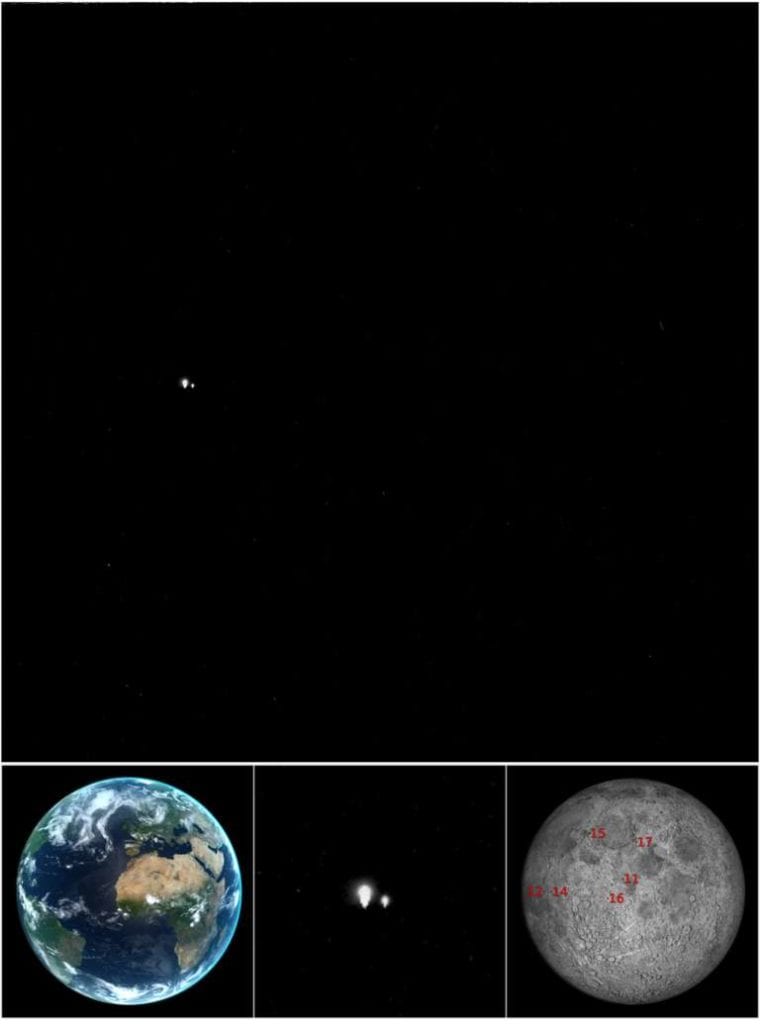
On 19 July 2013, NASA’s MESSENGER space probe shot a photo of the Earth and moon from Mercury. As you can see in the photo, the Earth and moon are so bright it’s almost impossible to tell them apart. This has a lot to do with the mission of the space probe.
NASA sent MESSENGER to Mercury to find small satellites that may be orbiting the planet. Considering the small size of the objects it was searching for, the probe needs to aim its cameras at the target area for some time before taking a photo.
Photographers call this overexposure and the idea is to allow the cameras capture as much light as possible from an object. That’s the only way the cameras can detect small elusive objects that would have remained unseen. The Earth and the moon would have been no larger than a pixel if the probe had shot the photo right after aiming its camera.[8]
2 First full photo of the Earth
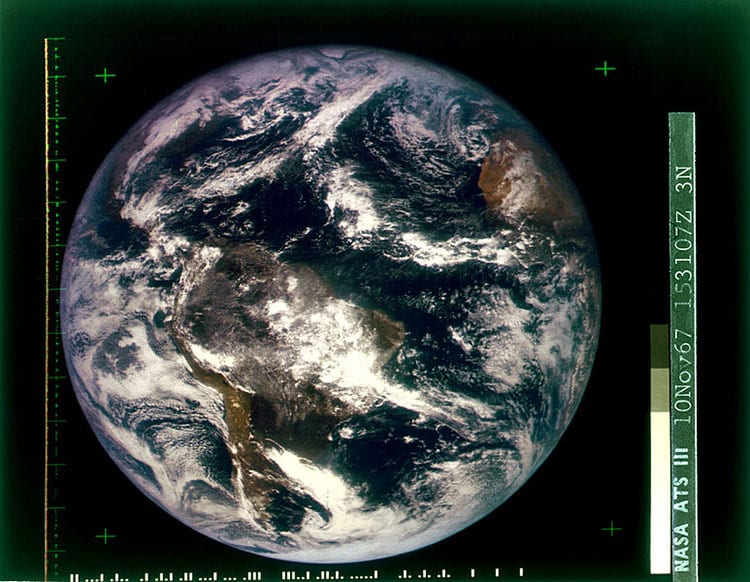
Taking a full close-up photo of the Earth from space is challenging for two reasons. The first is that the photographer needs to be far enough to capture the planet in full but close enough to capture all its details. The photographer also needs to select the perfect time when the sun will not cast shadows on the Earth.
If we asked most people if they knew the first full picture of the Earth, they would have mentioned the Blue Marble, which was shot by Apollo 17 astronauts traveling to the moon in 1972. Anyone who calls the Blue Marble the first full photo of the Earth is wrong. It is actually the second.
The first was shot by NASA’s ATS-3 experimental weather and communications satellite in November 1967. It’s unclear why the 1967 Blue Marble (as it is now called) is not as popular as the one that came after it. It’s probably because its colors are a bit duller.[9]
1 The Last full photo of the Earth

The 1967 and 1972 Blue Marbles we mentioned in the previous entry are just two of the many Blue Marbles out there. The latest Blue Marble was shot in 2015 and it’s called the 2015 Blue Marble. The 2015 Blue Marble should’ve been shot earlier but was delayed because Republicans and Democrats couldn’t find a middle ground.
Trouble began in 1998 when Vice president Al Gore revealed NASA was planning to launch a satellite to take a full photo of the Earth. Republicans opposed the program and nicknamed the satellite Goresat, a pun on Al Gore’s name. Both parties remained in disagreement until George W. Bush became president in 2000.
Bush’s administration asked NASA to remove the cameras on the satellite but NASA explained that the satellite and cameras would perform other tasks apart from taking photos. NASA also clarified that the reduced weight would affect the stability of the satellite in space. However, the Bush administration insisted and told NASA to replace the cameras with sandbags.
NASA mothballed the project instead since it was clear that the Bush administration was unwilling to fund it. Development only resumed when Barack Obama became president in 2008. The satellite was launched a few years later and it took the photo in 2015.[10]
10 Space Myths We Believe Because Of Movies


